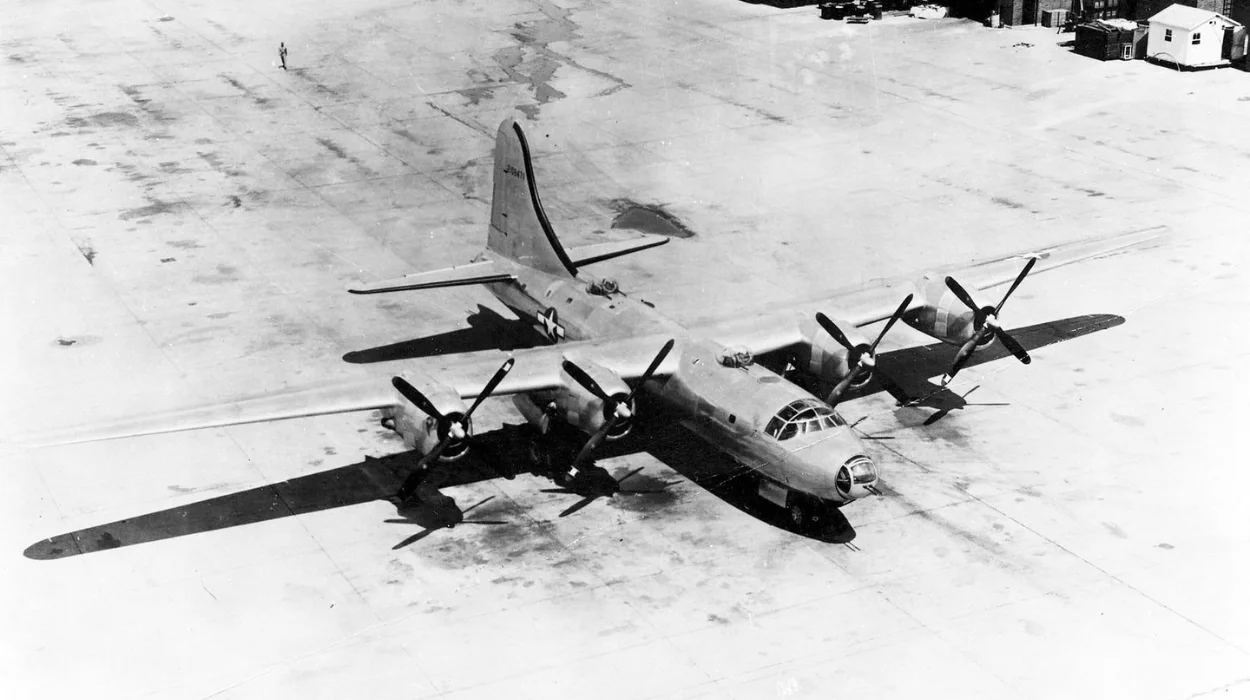World War II brought about the creation of several aircraft which left a lasting impression on history. Consolidated B-32 Dominator: a heavy bomber intended to back up the Boeing B-29 Superfortress.
Though the B-32 lived in shadows of its better-known sibling it still played a vital role in the Pacific Theater’s final chapters.
Origins and Development
B-32 Dominator is a story that began in the United States Army Air Corps’ (USAAC) late 1930s efforts to create new long-range, high-speed bombers capable striking deep targets inside enemy territories. As tensions rose in Europe and Pacific, the Army sought an aircraft of unmatched speed, range and payload.
Consolidated Aircraft Corporation is one manufacturer that proposed a design in response. Consolidated, known already for its PBY Catalina & B-24 Liberator aircraft, offered the Model 33. A high-wing Monoplane that featured modern pressurization and defensive armament as well advanced aerodynamics.
The USAAC eventually chose Boeing’s Model 345. It would go on to become the B-29 Superfortress. Consolidated received instructions from the Army not to put all of their eggs in the same basket. The B-32 Dominator would be the final version of this updated model, originally known as the XB-32.
Design Features and Specifications
B-32 Dominator – a large, powerful aircraft. With a wingspan of 135 ft and a length of 82 ft, it is incredibly large. Powered through four Pratt & Whitney R-4360 radial turbojet engines, B-32 can reach speeds up to 357.5 mph with a ceiling of 30700 ft.
This aircraft’s defense armament is one of its main features. Aircrafts with 13.50-caliber machines guns in remote-controlled and manual stations provided an impressive shield against enemies. B-32s can carry maximum bomb loads of up to 20 000 pounds.
B-32 was faced with many developmental obstacles despite these advantages. Pressurization problems, engine issues, and retractable cannon turrets plagued early prototypes. It was decided to remove the pressurization device, a revolutionary feature of that time, in order to streamline production and simplify upkeep.
Delayed entry into service
B-29 Superfortress proved itself to be the USAAF’s principal heavy bomber by 1944. Dominator entry into service further was delayed due to production and design issues, thus limiting deployment until the final month of war.
The 312th Bombardment Group took delivery of the first operational B-32s in mid-1945. Contrary to the B-29s which operated mostly from the Marianas Islands the B-32s operate out of the Philippines. Their first missions were reconnaissance and bombardment raids, aimed at disrupting Japanese supply routes and troop movements.
Fighting Role and Legacy
B-32s made their combat debut in May, 1945. While the Dominator’s missions were relatively small compared to B-29’s lengthy campaigns, it proved to a be reliable and capable aircraft. Pilots have praised the ruggedness of this aircraft, saying that it can sustain major damage yet return safely to the base.
In August 1945, Japan officially surrendered. One of B-32s more notable missions was to monitor the terms of Japan’s surrender. B-32s flew over Japan for reconnaissance, despite the fact that most American aircraft were no longer engaged in combat.
One of the last air combats during World War II occurred on August 18, when a B-32 called Hobo-Queen II came under attack by Japanese fighters. Despite suffering damage, the Dominator crew managed to fight off the attackers.
Why is B-32 overshadowed?
Many factors were responsible for the B-32 being less famous than the B-29. Timing is the most important factor. B-32’s arrival coincided with the conclusion of World War II, when the B-29 was already a legendary aircraft, having dropped nuclear bombs over Hiroshima and Nagasaki.
There were also many advanced technologies in the B-29, including a pressurized cockpit and advanced fire-control system, that overshadowed its more conventional design. Only 118 B-32s were produced, which was a result of the B-32’s limited production and development delays.
Tech Comparisons: Compare B-32 with B-29
While both B-32s and B-29s were built as heavy-bombers, they had their own distinct features. B-29 had many technological advances, including pressurized, remote-controlled cabins and an advanced bombing radar system. All of these innovations gave the B29 an edge when it came to precision bombing, and its high-altitude performance.
A B-32 on the contrary was simpler, more reliable and less fragile. In contrast, it had a simpler design and was more robust. Its simplicity, however, came at the price of a decreased operational range and reduced altitude capabilities.
Post-War Fate
B-32 was rapidly retired at the end World War II. When the USAAF became the U.S. Air Force at peace, it had less need of the Dominator.
In the end, most B-32s were destroyed. Museums only kept a few parts and items. B-32 remains an obscure footnote in the history of aviation, sometimes overshadowed but always respected by its admirers.
B-32 Program Lessons
The B-32 Dominator provides several important lessons for military aviation as well as technological innovation in wartime.
- A backup plan is important. B-29 did succeed, but B-32 provided a backup plan that would ensure the U.S. had a bomber of equal quality in case B-29 went sour.
- Adaptability. A robust design, powerful armament and a rugged construction made the B32 a highly reliable platform.
- Aspects of Timing: Timing plays a role as significant as design. A more significant role could have been played by the B-32 if the aircraft had been launched earlier in the conflict. In reality, the B-32 was introduced too late in order to have a meaningful impact.
Conclusion
Consolidated B-32 Dominator was not as well-known as B-29 Superfortress. However, it is an example of American aviation in World War II’s ingenuity. As a plane designed to guarantee operational continuity in unpredictable times, the B-32 did its job with reliability and resilience.
Though its impact was small, the B-32 is an important reminder that many unsung contributions collectively changed the course of war. Dominator’s story is fascinating to aviation historians and fans alike.




